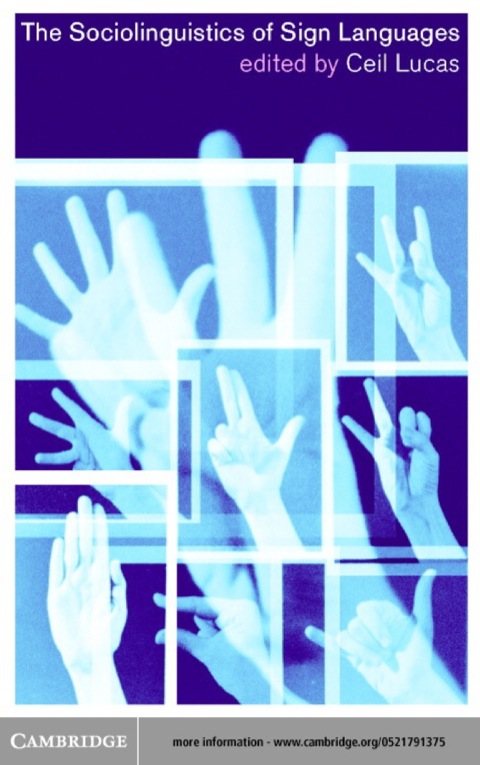Description
Efnisyfirlit
- Half-title
- Title
- Copyright
- Dedication
- Contents
- Figures
- Tables
- Contributors
- Foreword
- Preface and acknowledgments
- Abbreviations
- 1 Introduction
- 2 Multilingualism: The global approach to sign languages
- Sign languages used by hearing people
- How many languages are there?
- Mutual intelligibility
- The problem of nomenclature for sign languages
- “Planned” signed languages that are not used by Deaf communities
- The “standard” and the importance of dictionaries
- Statistical approaches to the definition of languages
- Sign languages in Europe
- Historical relationships
- World politics
- Educational systems
- Suggested Readings
- Exercises
- 3 Bilingualism and language contact
- Societal and individual bilingualism in the hearing world
- Canada
- Belgium
- Singapore
- Societal and individual bilingualism in the Deaf world
- Martha’s Vineyard in the USA
- A Yucatec Mayan village, Mexico
- Desa Kolok in Bali, Indonesia
- Bilingualism in most of the Deaf world
- Diglossia
- The transfer hypothesis: The influence of a first language upon the second
- Language shift
- Loan vocabulary in spoken languages
- “Loan” phenomena in sign language situations
- Mouthing
- Pidgins and creoles
- Code switching and code mixing
- Conclusions
- Suggested readings
- Exercises
- 4 Sociolinguistic variation
- The study of linguistic variation
- The sociolinguistic variable
- Variable units in spoken languages
- Variable processes in spoken languages
- Linguistic variation in spoken languages
- Early studies of variation in spoken languages
- Large-scale urban studies
- Recent research on sociolinguistic variation in spoken languages
- Sociolinguistic variation and language change
- Summary
- Linguistic variation in sign languages
- Variation in ASL
- Research on African American signing
- An international perspective on variation in sign languages
- Perspectives on the structure of sign languages
- Sign languages vs. spoken languages
- Variable units in sign and spoken languages
- Variable processes in spoken and sign languages
- Internal constraints on spoken and sign languages
- Social constraints particular to Deaf communities
- Three recent studies of variation in ASL
- An exploratory case study of a phonological variable
- A large scale quantitative study: Lucas et al. (2001) on DEAF
- Summary of the studies
- Methodological issues for the studies
- Conclusions
- Suggested readings
- Exercises
- NOTES
- 5 Discourse analysis
- Discourse structure
- Discourse action and interaction
- Context and discourse
- Methodological approaches to discourse analysis
- Speech act theory
- Interactional sociolinguistics
- Ethnography of communication
- Pragmatics
- Conversation analysis
- Variation analysis
- Features of sign language discourse
- Turntaking
- Conversational repair
- Discourse markers
- Constructing dialogue and action
- Cohesion
- Rhythm, rhyme and repetition
- The relevance of discourse genre
- Conclusion
- Suggested readings
- Exercises
- 6 Language planning and policy
- The nature and purposes of language planning
- Ideologies of language policy
- The language planning process
- Language rights and language policy
- Evaluating language policies
- Conclusions
- Suggested readings
- Exercises
- NOTES
- APPENDIX 6.1 STATEMENT ON THE RECOGNITION OF THE NATIONAL SIGN LANGUAGES OF THE DEAF PASSED AT THE T
- Comment
- The statement
- APPENDIX 6.2 WORLD FEDERATION OF THE DEAF CALLS FOR RECOGNITION OF SIGN LANGUAGES
- 7 Language attitudes
- Why study language attitudes?
- Definitions
- Early research on language attitudes
- How are language attitudes studied?
- Content analysis
- Direct measurement
- Indirect measurement
- Questions addressed by language attitude studies
- Attitudes toward languages
- Attitudes toward language groups
- Language and identity
- Theories of language attitudes: Answers to the questions
- Consequences and applications
- Second language
- Employers’ hiring practices
- Mass media
- Education
- Changes in language attitudes
- Conclusions
- Suggested readings
- Exercises
- NOTES
- Bibliography
- Index






Reviews
There are no reviews yet.